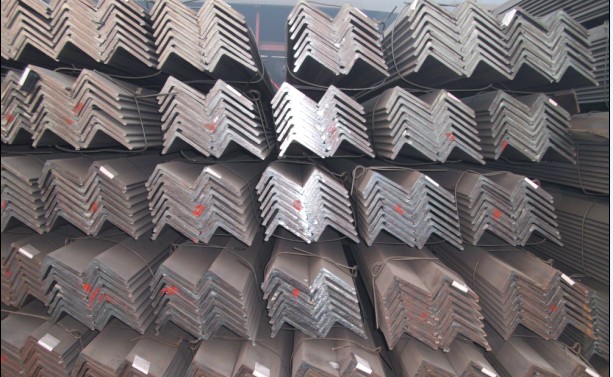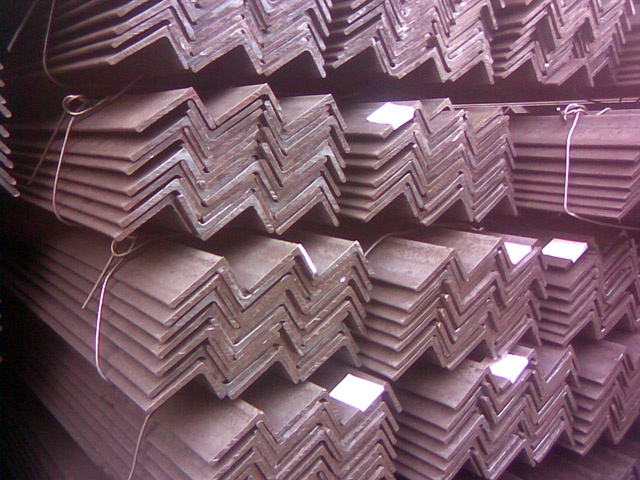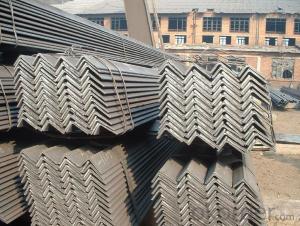Hot Rolled Unequal Angle Steel with High Quality
- Loading Port:
- Tianjin
- Payment Terms:
- TT or LC
- Min Order Qty:
- 100 m.t.
- Supply Capability:
- 35000 m.t./month
OKorder Service Pledge
OKorder Financial Service
You Might Also Like
OKorder is offering Hot Rolled Unequal Angle Steel with High Quality at great prices with worldwide shipping. Our supplier is a world-class manufacturer of steel, with our products utilized the world over. OKorder annually supplies products to African, South American and Asian markets. We provide quotations within 24 hours of receiving an inquiry and guarantee competitive prices.
Product Applications:
Hot Rolled Unequal Angle Steel with High Quality are ideal for structural applications and are widely used a variety of architectural and engineering structures, such as beams, bridges, ship; transmission tower, reaction tower; lifting transportation machinery; industrial furnace; container frame, warehouse goods shelves, etc
Product Advantages:
OKorder's Hot Rolled Unequal Angle Steel with High Quality are durable, strong, and wide variety of sizes.
Main Product Features:
· Premium quality
· Prompt delivery & seaworthy packing (30 days after receiving deposit)
· Can be recycled and reused
· Mill test certification
· Professional Service
· Competitive pricing
Product Specifications:
Grade: Q195 – 235
Certificates: ISO, SGS, BV, CIQ
Length: 6m – 12m, as per customer request
Packaging: Export packing, nude packing, bundled
| UNEQUAL ANGLE STEEL | |||||
| size(mm) | a(mm) | a1(mm) | thickness(mm) | kg/m | length(m) |
| 75*50*5 | 75 | 50 | 5 | 4.808 | 6m,9m,12m |
| 75*50*6 | 75 | 50 | 6 | 5.699 | 6m,9m,12m |
| 75*50*8 | 75 | 50 | 8 | 7.431 | 6m,9m,12m |
| 100*75*7 | 100 | 75 | 7 | 9.34 | 6m,9m,12m |
| 100*75*8 | 100 | 75 | 8 | 10.6 | 6m,9m,12m |
| 100*75*9 | 100 | 75 | 9 | 11.8 | 6m,9m,12m |
| 100*75*10 | 100 | 75 | 10 | 13 | 6m,9m,12m |
| 100*75*12 | 100 | 75 | 12 | 15.4 | 6m,9m,12m |
| 125*75*7 | 125 | 75 | 7 | 10.7 | 6m,9m,12m |
| 125*75*8 | 125 | 75 | 8 | 12.2 | 6m,9m,12m |
| 125*75*9 | 125 | 75 | 9 | 13.6 | 6m,9m,12m |
| 125*75*10 | 125 | 75 | 10 | 15 | 6m,9m,12m |
| 125*75*12 | 125 | 75 | 12 | 17.8 | 6m,9m,12m |
| 150*90*8 | 150 | 90 | 8 | 14.7 | 6m,9m,12m |
| 150*90*9 | 150 | 90 | 9 | 16.4 | 6m,9m,12m |
| 150*90*10 | 150 | 90 | 10 | 18.2 | 6m,9m,12m |
| 150*90*12 | 150 | 90 | 12 | 21.6 | 6m,9m,12m |
| 200*100*10 | 200 | 100 | 10 | 23 | 6m,9m,12m |
| 200*100*12 | 200 | 100 | 12 | 27.62 | 6m,9m,12m |
| 200*100*15 | 200 | 100 | 15 | 34.04 | 6m,9m,12m |
FAQ:
Q1: Why buy Materials & Equipment from OKorder.com?
A1: All products offered byOKorder.com are carefully selected from China's most reliable manufacturing enterprises. Through its ISO certifications, OKorder.com adheres to the highest standards and a commitment to supply chain safety and customer satisfaction.
Q2: How do we guarantee the quality of our products?
A2: We have established an advanced quality management system which conducts strict quality tests at every step, from raw materials to the final product. At the same time, we provide extensive follow-up service assurances as required.
Q3: How soon can we receive the product after purchase?
A3: Within three days of placing an order, we will arrange production. The normal sizes with the normal grade can be produced within one month. The specific shipping date is dependent upon international and government factors, the delivery to international main port about 45-60days.
Images:



- Q:How do you prevent galvanic corrosion in steel angles?
- One way to prevent galvanic corrosion in steel angles is by applying a protective coating or paint to the surface of the steel. This coating acts as a barrier between the steel and any other metal that may come into contact with it, thus inhibiting the electrochemical reaction that leads to galvanic corrosion. Additionally, using non-metallic or non-conductive materials between dissimilar metals can also help prevent galvanic corrosion. Regular inspection and maintenance to identify any signs of corrosion and taking appropriate measures promptly can further prevent the occurrence of galvanic corrosion in steel angles.
- Q:Can steel angles be used for HVAC systems?
- Yes, steel angles can be used for HVAC systems. They are commonly used as structural supports for ductwork, equipment mounting, and framework in HVAC installations. Steel angles provide strength and stability, making them suitable for various applications in HVAC systems.
- Q:How do you determine the shear capacity of a steel angle?
- The shear capacity of a steel angle can be determined by calculating the shear stress at the critical section, which is typically located at the junction between the web and the flange. This can be done by dividing the applied shear force by the effective shear area, taking into account the material properties and geometric dimensions of the angle. Additionally, design codes and standards provide tables and formulas that can be used to determine the shear capacity of steel angles based on their dimensions and loading conditions.
- Q:What are the different types of steel angles used in signage structures?
- There are several different types of steel angles that are commonly used in signage structures. These angles are used to provide structural support and stability to the signage, ensuring that it remains in place and can withstand various weather conditions. 1. Equal Angles: Equal angles, also known as L-shaped angles, have equal sides and are commonly used in signage structures. These angles provide a strong and sturdy framework for the signage, allowing it to withstand wind and other external forces. 2. Unequal Angles: Unequal angles, as the name suggests, have sides of unequal length. These angles are often used in signage structures where different sides of the signage require varying levels of support. Unequal angles can be tailored to meet specific design requirements and can provide added stability to the signage. 3. Hollow Structural Sections (HSS): HSS angles are steel angles that have a hollow interior. These angles are widely used in signage structures due to their lightweight nature and high strength-to-weight ratio. HSS angles are especially useful when constructing large and complex signage structures, as they help reduce the overall weight and allow for easier installation. 4. Corner Angles: Corner angles are used to reinforce the corners of signage structures, providing additional support and preventing any potential bending or warping. These angles are typically made from thicker steel and are designed to withstand high levels of stress and pressure. 5. Galvanized Angles: Galvanized angles are steel angles that have been coated with a layer of zinc to protect them from rust and corrosion. These angles are commonly used in outdoor signage structures, where they are exposed to moisture and other environmental elements. The galvanized coating ensures the longevity and durability of the angles, prolonging the lifespan of the signage structure. Overall, the choice of steel angles used in signage structures depends on factors such as the size and design of the signage, the expected load and stress, and the environmental conditions. By selecting the appropriate type of steel angle, signage structures can be built to withstand the rigors of outdoor environments and provide long-lasting support for various types of signage.
- Q:Are steel angles resistant to fire?
- Steel angles are generally considered to be fire resistant. Steel is a non-combustible material, meaning it does not burn or contribute to the spread of fire. However, it is important to note that while steel itself is resistant to fire, it can lose its strength when exposed to high temperatures for an extended period of time. In a fire situation, the temperature can rise rapidly, causing the steel to weaken and potentially compromise the structural integrity of a building or component. To enhance fire resistance, steel angles can be protected by applying fire-resistant coatings, such as intumescent paint or fireproofing materials. These coatings can provide additional insulation, delaying the steel's exposure to high temperatures and preventing its failure. Ultimately, the fire resistance of steel angles depends on various factors, including the duration and intensity of the fire, as well as the measures taken to enhance their fire performance. It is essential to consult with fire protection experts and adhere to building codes and regulations to ensure the appropriate level of fire resistance for steel angles in a specific application.
- Q:Can steel angles be cut to custom lengths?
- Yes, steel angles can be cut to custom lengths. Steel angles, also known as angle irons, are versatile structural components commonly used in construction and manufacturing. They are available in various standard sizes, but they can also be customized to meet specific length requirements. This can be achieved by using cutting tools such as saws or shears to trim the steel angle to the desired length. The ability to cut steel angles to custom lengths makes them suitable for a wide range of applications, as they can be tailored to fit specific design needs.
- Q:How do you determine the required size of a steel angle for a specific application?
- There are several factors to consider when determining the necessary size of a steel angle for a particular application. These factors include the load or weight the angle will support, the distance between supports, and the material properties of the steel angle. The first step is to determine the load or weight that the angle will bear. This can be done by calculating the total load applied to the angle, including any objects or structures it will support. It is important to account for static and dynamic loads, as well as potential impact or wind loads. Next, the distance between supports must be taken into account. This is the length over which the angle will span and bear the load. Longer spans typically require larger and stronger angles to maintain structural integrity. Furthermore, the material properties of the steel angle are crucial in determining its necessary size. Steel angles come in different grades and strengths, each with varying load-bearing capacities. It is important to consult engineering and design codes, such as the AISC Manual, to determine the appropriate grade of steel angle that can withstand the calculated load. Once the load, span, and material properties are determined, engineering calculations can be performed to select the necessary size of the steel angle. These calculations typically involve evaluating the angle's moment, shear, and deflection under the applied load. Design tables and equations from the AISC Manual can be used to determine the appropriate size and shape of the angle based on these calculations. To conclude, determining the necessary size of a steel angle for a specific application involves considering the load, span, and material properties of the angle. By performing engineering calculations and referring to design codes, the appropriate size of the angle can be selected to ensure structural safety and integrity.
- Q:Can steel angles be used for sound barriers?
- Yes, steel angles can be used for sound barriers. Steel angles are commonly used in construction and can be suitable for sound barrier applications due to their durability, strength, and ability to absorb and block sound.
- Q:What do you mean by "corner steel plate pull knot"?
- Angle called angle, the steel strip is perpendicular to each other on both sides into the corner. There are equal angles and unequal angles. The two sides of an equal angle steel are equal in width.
- Q:Are steel angles recyclable?
- Indeed, steel angles possess recyclability. Steel, being one of the most frequently recycled substances globally, maintains its qualities even after undergoing numerous cycles of melting and reshaping. Consequently, steel angles can be recycled and employed in the production of fresh steel commodities. The act of recycling steel angles aids in the preservation of natural resources, reduction of energy consumption, and limitation of landfill waste accumulation. Furthermore, the recycling procedure for steel proves remarkably efficient and economical, rendering it an environmentally friendly choice for both the construction sector and other industries reliant on steel angles.
1. Manufacturer Overview |
|
|---|---|
| Location | |
| Year Established | |
| Annual Output Value | |
| Main Markets | |
| Company Certifications | |
2. Manufacturer Certificates |
|
|---|---|
| a) Certification Name | |
| Range | |
| Reference | |
| Validity Period | |
3. Manufacturer Capability |
|
|---|---|
| a)Trade Capacity | |
| Nearest Port | |
| Export Percentage | |
| No.of Employees in Trade Department | |
| Language Spoken: | |
| b)Factory Information | |
| Factory Size: | |
| No. of Production Lines | |
| Contract Manufacturing | |
| Product Price Range | |
Send your message to us
Hot Rolled Unequal Angle Steel with High Quality
- Loading Port:
- Tianjin
- Payment Terms:
- TT or LC
- Min Order Qty:
- 100 m.t.
- Supply Capability:
- 35000 m.t./month
OKorder Service Pledge
OKorder Financial Service
Similar products
New products
Hot products
Related keywords




























